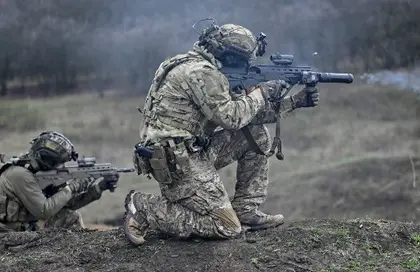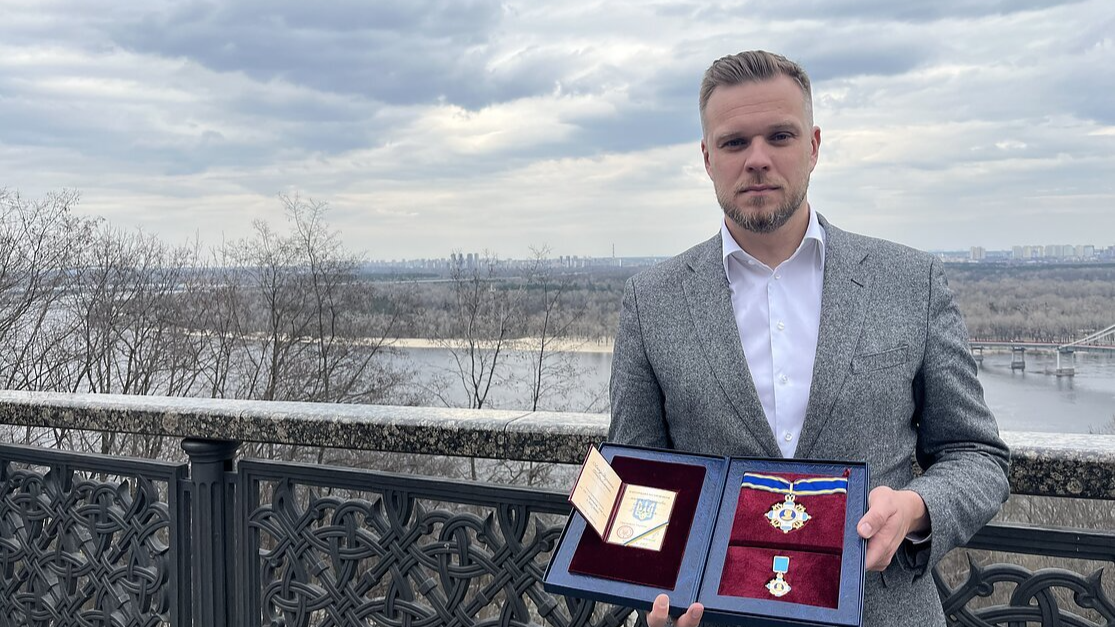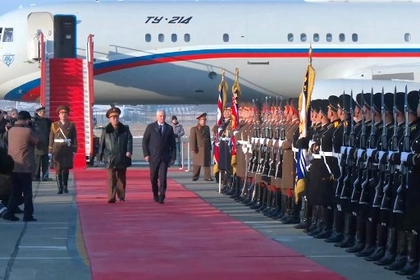Overview:
- Antisemitic mob storms runway in Dagestan, shuts down airport
- Two drones damaged facility near Krasnodar that made jet fuel for Russia’s military
- Reports of planned attack on Avdiivka coke plant
- Russian troops estimated at 40K and growing in Avdiivka despite record losses
- Dissidents gather to remember victims of Stalin despite Kremlin crackdowns
- More Ukrainian gains reported south of Bakhmut
Anti-Israel protesters storm airport in the Caucasus, hunting for Jewish passengers
After rumors spread that a flight was to arrive from Israel in the largely Muslim republic of Dagestan in the Russian Federation, an angry group of protesters stormed an airport there, hunting for Jews and Israelis.
The perpetrators of what can only be described as a modern pogrom [systematic Jewish persecution in the 19th century Russian Empire] shouted “Allahu akbar” (“God is the greatest”) and broke through blockades as they looked for Jews, and violently approached passengers with Middle Eastern appearances. A large mob even reached the runway. The airport was forced to close down, canceling both inbound and outbound flights.
JOIN US ON TELEGRAM
Follow our coverage of the war on the @Kyivpost_official.
The governor of Dagestan promised that the protesters at the Makhachkala airport would be prosecuted, AFP reported.
Videos re-posted to social media by Wall Street Journal Chief Foreign Affairs Correspondent Yaroslav Trofimov show the madness that unfolded.
In the absence of actual Jews, a Russian-speaking Uzbek gets pogromed in the Makhachkala airport. pic.twitter.com/31i71mKcB8
— Yaroslav Trofimov (@yarotrof) October 29, 2023
In a post on social media, President Zelensky said it demonstrated a "widespread culture of hatred" in Russia.
Drones blow up parts of Afip oil refinery in the Krasnodar area
Two Ukrainian drones blew up parts of an oil refinery near Krasnodar, Russia, in the early hours of Sunday, leaving the facilities in flames. Ukraine’s Security Service (SBU) took credit for the attack, according to Ukrainska Pravda.
Sources told the Ukrainian paper that the Afip facility produced more than seven million tons of fuel last year, used by the Russian jets that launch sorties over Ukraine every day.

What if Russia Wins?
At about 3:45 a.m., explosions rocked the oil-refining plant in Krasnodar’s Seversky district, again, an important provider of jet fuel for Moscow’s military aviation.
⚡️The night attack on an oil refinery in the 🇷🇺Krasnodar region is a special operation of the Security Service of 🇺🇦Ukraine.
— 🪖MilitaryNewsUA🇺🇦 (@front_ukrainian) October 29, 2023
As the Ukrainian media confirm with their sources, the Afip Refinery, which supplied fuel to the Russian troops, was attacked by two SBU drones. Several… pic.twitter.com/Whbhx6g9fq
Russian dissidents gather in Moscow, and other cities, to remember Stalin’s atrocities
Despite Kremlin crackdowns on protests and dissenting voices on its invasion of Ukraine, a group of Russian dissidents gathered on Sunday to remember the victims of Stalin’s terror, AFP and other sources reported from Moscow.
Since 2020, Moscow has banned the “Reading of the Names” event, organized by the Nobel Prize-winning group, Memorial, where protesters read aloud the names of people executed by the Soviet leader’s brutal regime. An estimated six million Soviets were killed by Stalin, mostly between 1936 and 1938.
Organizers were banned from holding the ceremony at the Solovetsky Stone memorial in Moscow’s Lubyanka Square, the site of the once-headquarters of the KGB, and instead hosted events at various venues around the capital. Additionally, they held readings in other cities around Eastern Europe home to Russians opposed to the war in Ukraine.
Thousands of Russians have been jailed for their views on the invasion of Ukraine, notably Putin’s most visible critic, Alexei Navalny, now in a “special regime” gulag in Siberia.
Despite Moscow’s orders, some activists came to the Lubyanka to pay their respects and lay flowers, as did “several Western ambassadors, including the US envoy,” AFP reported.
Stalin’s reign of terror was felt acutely in Ukraine, where his policies of starvation, known as the Holodomor, and political executions killed millions in the 1930s.
Operations: Bakhmut area
The Institute for the Study of War (ISW) reported that footage posted to social media on Sunday indicates that Ukrainian forces finally have crossed the contested railway line south of Andriivka (10 km south of Bakhmut).
RU 1428th TDF drone dropping on AFU near Andriivka.
— imi (m) (@moklasen) October 29, 2023
Location: 48.4916743289, 37.9714795966@UAControlMap @GeoConfirmed pic.twitter.com/2B6WB2mGyK
Meanwhile, the General Staff of the Armed Forces of Ukraine (AFU) claimed that Ukrainian forces continued attacks south of Bakhmut and in the area around Melitopol. Indeed, a “prominent” Russian identified by the ISW claimed that Ukrainian forces established control over “unspecified positions” just over the regional border in western Zaporizhzhia over the past week.
Operations: Avdiivka
Reports of whether Russian troops now control the famous slag heap in the hotly contested city of Avdiivka continue to be conflicting, even among Russian military bloggers. One such news aggregator claims that Moscow’s forces at least have “consolidated” positions at the waste heap, the ISW reported, and are moving southward from the city and near the suburb of Sieverne.
One Russian military blogger posted that there are voices swirling about a planned Russian attack on Avdiivka’s coke-producing plant north of the city.
North of the city, the AFU’s General Staff reported that its forces successfully defended against Russian attacks near Keramik (10 km northwest of Avdiivka), Stepove (8 km northwest of Avdiivka), and Novokalynove (7 km north of Avdiivka). The AFU spokespeople also claimed that Ukrainian troops have repelled attacks west of the city in Tonenke (5 km west of Avdiivka), Opytne (3 km southwest of Avdiivka), and Pervomaiske (11 km southwest of Avdiivka.)
According to Ukrainian military sources cited by the ISW, Russian forces are continuing to replenish their forces in the area, “building their combat power” around Avdiivka, where Moscow has suffered record losses, which have spiked much further over the weekend. The Tavriisk Group of Forces Spokesperson, Colonel Oleksandr Shtupun, posted on Sunday that Russia now has 40,000 soldiers serving on the Avdiivka front and that number is growing, despite the soaring casualties.
The ISW noted that Ukrainian military observer Kostyantyn Mashovets estimated over the weekend that Russian forces have “elements of 12 separate motorized rifle brigades, 16 separate rifle regiments of the mobilization reserve, 22 separate rifle battalions of the mobilization reserve, 11 separate tank battalions, a separate motorized rifle battalion, and three consolidated tactical detachments at the battalion level.”
You can also highlight the text and press Ctrl + Enter









